An official account of all species that have been recorded and reported by birdwatchers and naturalists in the Poole Harbour area since records began.
The data for this list has been extracted from various sources, but George Greens 'The Birds of Dorset', Mansel-Pleydell's Birds of Dorsetshire, Naylor’s reference manual of rare birds and the back catalogue of Dorset bird reports have provided most information. Data is currently still being researched and records will be updated accordingly.
You can view this information in two different ways. Our alphabetical list provides information on the status of each species within the harbour, finder dates and names, photos and favoured locations. By clicking on the Systematic List button you will be presented the full Poole Harbour systematic list which includes status of species, pending records and historical accounts.
To date, 333 species have occurred and have been accepted within the Birds of Poole Harbour boundaries. A further 11 distinct subspecies have also been seen. In addition, we have two species/subspecies which have been recorded, but are awaiting acceptance by the appropriate records panel.
There are a handful of historical records, for which there is currently insufficient information to allow their inclusion onto the Poole Harbour list, but are believed to be genuine records. They are listed at the end of the list.
Finally, there are a number of feral or escaped species that have been recorded within the Birds of Poole Harbour boundaries. They are included for completeness, but are not included on the Poole Harbour list.
We would be interested in hearing details of any species that do not appeared on this list.
The Birds of Poole Harbour systematic list is a PDF which you can view by clicking on the button below. It was last updated on December 2019.
Full Poole Harbour Systematic List
Whitethroat
Latin Name
Sylvia communis
Status
Summer Visitor & Passage Migrant
Site And Records Information
Regularly seen in large hedgerows from late April to early May but breeding sites are in much decline. On passage Ballard, Arne, Lytchett Bay, Studland, Lytchett Heath and Middlebere are good with birds breeding at Upton Country Park, Ballard and Studland. Autumn passage can be strong, so anywhere with suitable rough scrubland should host birds throughout August and September
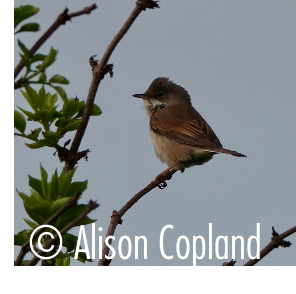
Whooper Swan
Latin Name
Cygnus cygnus
Status
Scarce Winter Visitor
Site And Records Information
Whooper Swans in Britain normally come from Iceland and these birds occasionally get blown off course over the sea ending up too far south and may then make there their way along the Dorset coast or up the valleys through the harbour. The few ringing recoveries in southern England however indicate that these birds are from Finland.
In the 1960s regularly reported over-wintering at Little Sea, however since then weather conditions have to be extreme before this bird becomes easy to see in the harbour.
The maximum was “a herd of c64 visited the harbour” during the big freeze on 19th January 1963.
A.J.Bull wrote of this great run of records in the 1964 Bird report; On 27th November 2 flew west from Brands Bay. During the latter half of December several were seen on Little Sea including 4 on the 19th. 8 others were seen flying into Poole Harbour: 6 including one juvenile on December 20th and one on December 27th”.
In 1962 one to three were reported in January then in 1963 “there were ten Whoopers regularly in January and on the 19th of the month a herd of 54 visited the harbour (Helen Brotherton). For some time in February two or three were to be seen close to the main Sandbanks Road at Shore Road”
A rather odd record of a bird found on 9th March 1960 at Poole Park which stayed 13 months until 8th April 1961
After that visits became more prosaic with two in Poole Harbour on the Holton Heath Shore on 14th December 1967 seen by Dr Godfrey. Next were “A skein of forty flying over Brownsea in March 1980” seen by Tony Wise.
The three most recent visits represent some sort of passage through the harbour with two birds on Brownsea on 4th November 1994, on the 28th October 1997 (the earliest of dates), two Swans were seen to fly out of the harbour “whooping”, on 31st October 1999.
Recent Records
2014
31st October – Middlebere – 4 (1 ad & 3 juv)
2016
20th Oct – Lytchett Bay 1 ad (ID Ballam, IM Lewis).
13th Nov Middlebere 1 ad (D Allison).
2017
5th Oct – Lytchett Bay 3 ads (ID Ballam et al).
2018
19th Oct – Lytchett Bay 2 West (S Robson).
2022
8th Oct – One through harbour entrance at dawn and later seen at Middlebere (G.Armstrong and M.Wright)
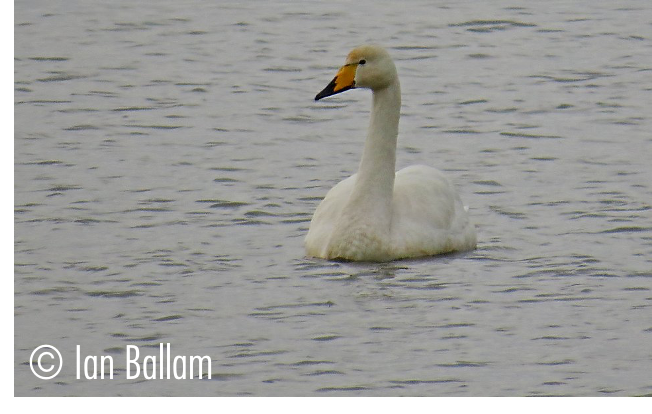
Wigeon
Latin Name
Anas penelope
Status
Winter Visitor
Site And Records Information
A winter visitor from Scandinavia and Russia, many birds pass through on their way further south. They are found in Brands Bay, Ower Bay, Newton Bay, Middlebere, Lytchett Bay, Holes Bay and off Holton Heath and occasionally, if flooding and weather encourages it, the Frome Valley and East Stoke.
Wigeon were traditionally hunted in the harbour as Alan Bromby points out; “For many generations these were the chief quarry of the wildfowlers of Poole and played an important part in the local economy…… ”. Numbers must have been between 2000 and 4000 birds before 1930. As with Black-tailed Godwit the Avon valley is “twinned” with Poole Harbour for Wigeon and the circumstances on the river there have a big influence on numbers here, as will circumstances on the Fleet. They are still a quarry species within the harbour.
During the last sixty years Wigeon numbers have climbed considerably and with winter totals between 3000-4500 with an exceptional count of 7604 at Little Sea and in the Wareham channel on 3rd January 1982. The earliest was on 16th August 1969 and the latest on 8th April 1969.
Their far carrying whistle is one of the most recognisable sounds of the winter here in the harbour, with the cycle path in the NE corner of Holes Bay being the best site to see and hear them, as they’re often just yards from the path it’s self.
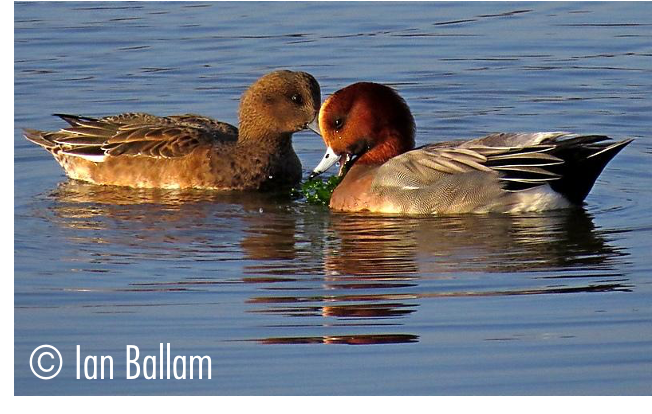
Willow Tit
Latin Name
Poecile montana
Status
Former Resident, now Rare Visitor
Site And Records Information
Mainly identifiable by it’s song, this almost identical relation to the Marsh Tit is now considered extinct in Dorset. The boggy areas around South Haven and Little Sea were particularly favoured where they could potentially be seen in the mixed Tit flocks that roam the area. Below are examples of (semi)recent sightings.
1 singing on 21st April 1977 at 12 Acre Wood
1 on 8th & 15th February 1998 at Lytchett Bay
1 on 11th February 1998 on the Arne feeders
1 on 2nd May 1998 at Slepe Copse
1 singing on 8th April 2000 at Corfe Castle
Any claims of Willow Tit in Poole Harbour and Dorset are extremely important. A sighting must be submitted to Dorset Bird Club with a written description, ideally a photo and even better a sound recording.
Willow Warbler
Latin Name
Phylloscopus trochilus
Status
Summer Visitor & Passage Migrant
Site And Records Information
More easily found on spring and autumn migration when large numbers pass through the harbour. Ballard Down, Arne, Sunnyside Farm, Studland, Middlebere and Lytchett Bay are all regular feeding areas. Singing males can be heard from April onwards but nowadays very few pairs stay and breed. Breeding totals were far greater 20-30 years ago with 30-40 pairs at Arne alone in the 70’s. Singing males have most recently been encountered along Soldiers Road, Arne and at Hartland.
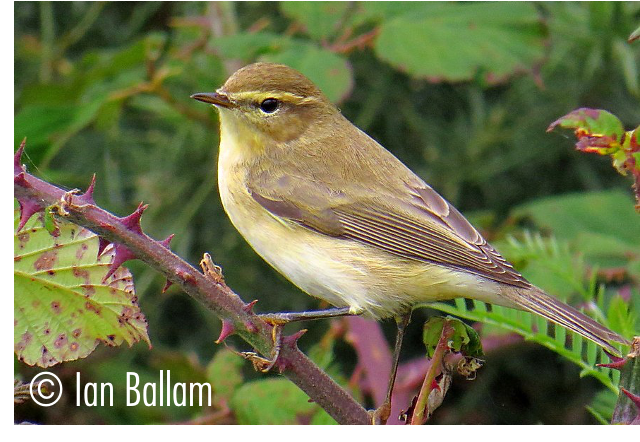
Wilson’s Phalarope
Latin Name
Phalaropus tricolor
Status
Vagrant
Site And Records Information
1 on 20th June 1988 in Holes Bay. Discovered by a surveyor who was monitoring Redshank numbers in preparation for the new Holes Bay bridge.
Wood Sandpiper
Latin Name
Tringa glareola
Status
Passage Migrant
Site And Records Information
Wood Sandpiper used to be quite hard to catch up with in Poole Harbour. Birds used to appear in the past at sites Lytchett Bay, Sunnyside Farm, Brownsea Lagoon, Swineham and Bestwall. They usually start to pass through from mid August and can be observed through September. However with the creation of Lytchett Fields, Holton Pools and Sunnyside Pools sightings are now far more frequent with Lytchett Fields seeing several per autumn. Spring passage is much weaker, but again, Lytchett Fields has seen several recent spring records.
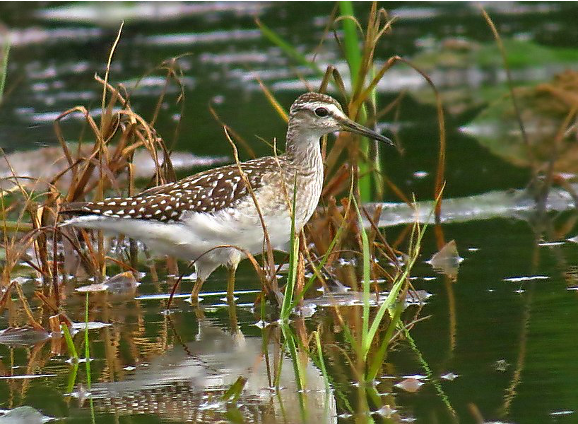
Wood Warbler
Latin Name
Phylloscopus sibilatrix
Status
Scarce Summer Visitor & Passage Migrant
Site And Records Information
Being in the right place and the right time is now key for Wood Warbler. Has bred along the Arne Road, Slepe Copse, Brownsea, Greenland’s Farm, Ridge Moors, Arne triangle, Stoats Wood near Canford Heath, Hartland Moor, Arne reserve and Studland…..but not recently! It is much more likely to be seen as a passage migrant, and has also been recorded at Ballard, Poole Park and Lytchett Bay. Spring birds begin to pass through in mid-April and have all gone through by early May. Autumn sightings are ver very rare.
Woodchat Shrike
Latin Name
Lanius senator
Status
Vagrant
Site And Records Information
Woodchat Shrike occurs in Dorset almost annually, primarily as an overshooting spring migrant. There are 7 harbour records, 3 in the last 10 years.
1 on 21st Apr 1893 at Corfe Castle (Field 29th Apr1893)
1 on 31st May 1975 at Wytch
1 on 28th Jun 1981 at Arne
1 on 1st Jun 1982 on Ballard Down
1 on 18th May 2008 at East Holme (S.Robson et al)
1 on 28th May 2009 at Middlebere (G.J.Armstrong et al)
1 on 10th Apr 2011 at Lytchett Bay (D.Bandfield et al)
Woodcock
Latin Name
Scolopax rusticola
Status
Passage Migrant & Winter Visitor
Site And Records Information
Although a past breeder, no confirmed breeding sites have been found for a few years, but it is possible breeding birds could get missed. Like Nightjar in summer, these birds are easiest to see at dusk in the winter. Birds are frequently seen flying from the woodland at Soldiers Road, across the Arne road and out on to the Arne moors normally about 20 minutes before total darkness. Many of the woodland around the harbour supports Woodcock during the winter, and by standing of the edges of the woodland at dusk looking against the skyline will allow you to see the birds leaving daytime hiding spots and heading off to feed. During extreme cold weather the harbour can see Woodcock invasions, like in 2010 when birds were getting recorded on many country roadside verges at night literally dying to find food. During the 2013/14 winter period we conducted a winter Woodcock of Poole Harbour study which proved that an estimated c650 Woodcock over-winter within the Poole Harbour area each year.
Woodcook – Ringed at Sunnyside Farm – Paul Morton
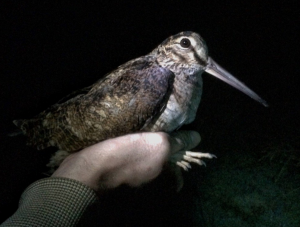
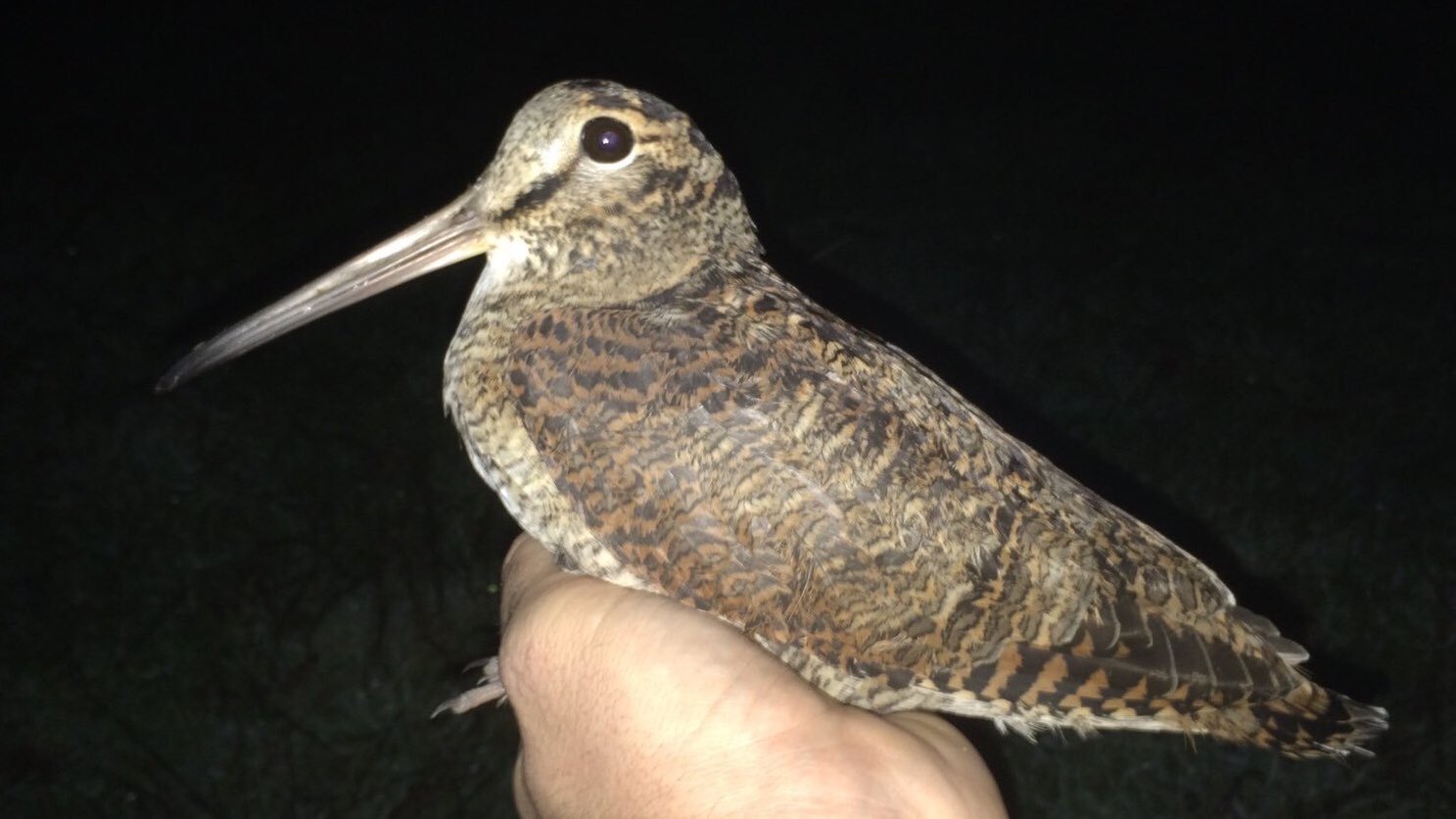
Woodlark
Latin Name
Lullula arborea
Status
Resident
Site And Records Information
Woodlark have become slightly easier to find in the harbour compared to 30 years ago as plenty of new suitable habitat becomes available due to conifer clearing work and heathland restoration projects. Birds start their stunning descending songs in early February and can be heard ringing out across many heathlands during the day and night at Arne, Stoborough, Grange, Studland, Holton Lee and Godlingston Heaths through March, April and May. On passage they can be seen during the ‘Vis Mig’ (Visible Migration) season passing over head at Glebelands, Ballard and North/South Haven. In 2011 up to four pairs bred at Arne with a post breeding flock of nine birds seen many times in the August. Post breeding flocks of 5-10 birds aren’t unusual around Hartland, Stoborough Heath and Soldiers Road. In 2019 a post breeding flock of 22 were found in fields at the Carey Secret Garden and in 2021 a full Dorset breeding survey was conducted which gave a total of 125 territories across the county.
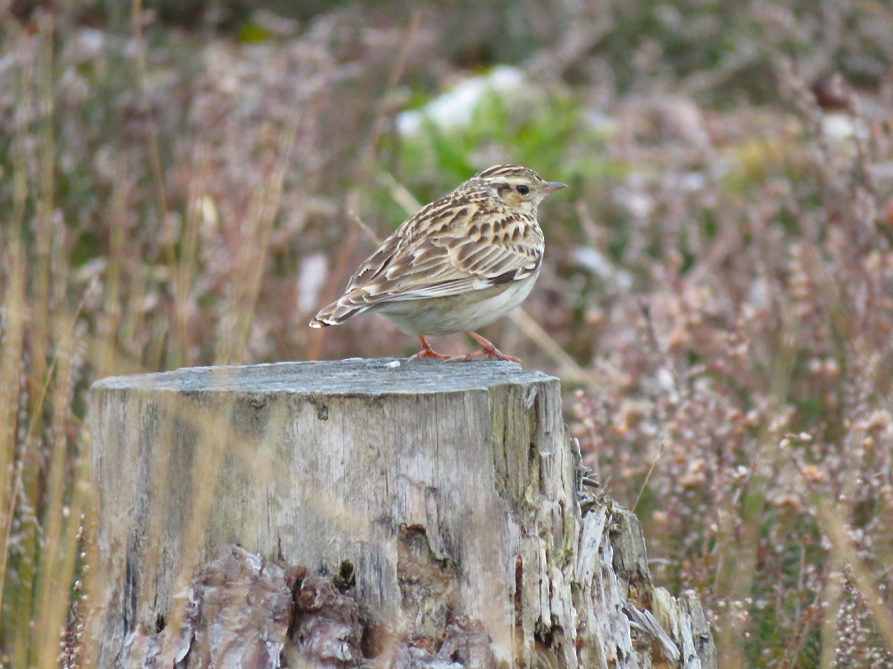
Woodpigeon
Latin Name
Columba palumbus
Status
Resident
Site And Records Information
Evident around the entire harbour, Woodpigeon is a bird you can’t fail to see. However, to make the most of these plump pigeons you may want to watch the mass Woodpigeon migration that takes place across the harbour usually in early November each year. A mind blowing 161,257 were counted flying across the harbour in just 5 hours on the morning of November the 7th 2010..
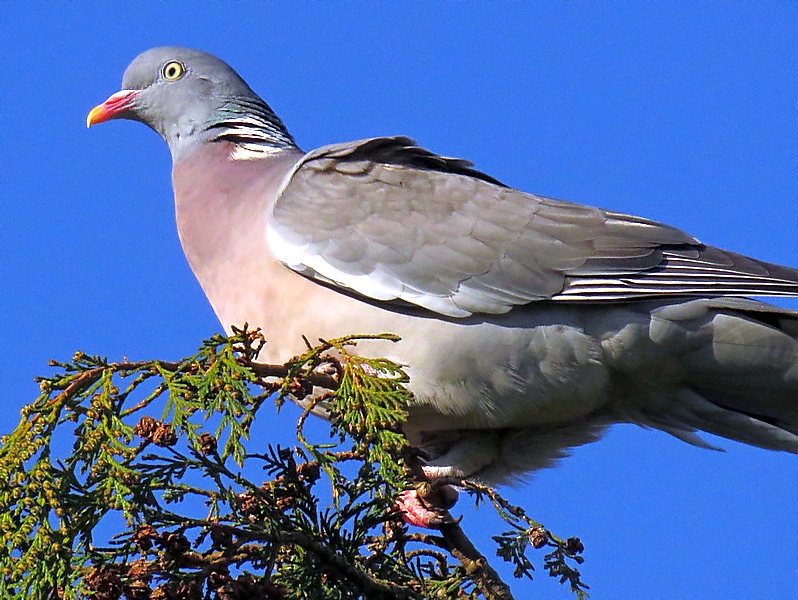
Wren
Latin Name
Troglodytes troglodytes
Status
Resident
Site And Records Information
An abundant species throughout the harbour found in any woodland, garden, scrub, heathland even reed bed habitat. High counts generally occur in winter, usually at roost sites, for example Studland has Dorsets highest count of 250 birds in the winter of 1987 and 300 birds in 1988.
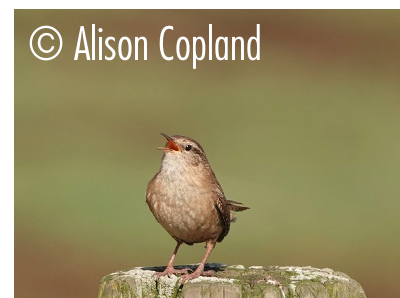
Wryneck
Latin Name
Jynx torquilla
Status
Scarce Passage Migrant
Site And Records Information
A much sought after bird to find on a fine autumn day. Records span right around the whole harbour from Upton Heath and Holes Bay, all the way through Sandford and Wareham to the heaths of Arne, Godlingston and Studland. The best months to track one down are August and September in any rough, scrubby area.
1 on 14th September 2008 on Ballard Down
1 on 10th September 2008 on Brownsea Island
1 on 14th September 2008 at Studland
1 on 8th September 2009 at little Sea Studland
1 from 4th – 5th September 2009 at Middlebere
1 on 22nd September 2009 at Upton
1 on 1st Sptember 2010 at Middlebere
1 from 24th – 30th August 2012 at Middlebere
1 on 11th September 2012 at Greenland Farm, Brands Bay
1 on 13th September 2012 on Brownsea Island
1 on 16th April 2015 at Lytchett Fields
1 on 30th August 2015 at Greenlands Farm, Studland
1 on 17th – 18th September at Middlebere
1 on 19th & 20th Sept 2016 on Coombe Heath, Arne
1 on 29th September 2016 in a Parkstone Garden, Poole (P.Derrick)
1 on 30th September 2016 at South Haven, Studland (G.Armstrong)
1 on 25th Aug 2019 – Lytchett Heath ringed during a ringing session (T.Elborn, S.Robson et al)
1 on 26th Aug 2019 at Ballard Down/Ulwell (B.Edge)
1 on 27th Aug 2019 at Hydes Heath, Arne (M.Parker)
1 on 6th September at Lytchett Fields 2019 (P.Morton)
1 on 14th September 2020 on Coombe Heath Raptor trail (A.Hirst)
1 on 27th April 2021 at Lytchett Fields SANG
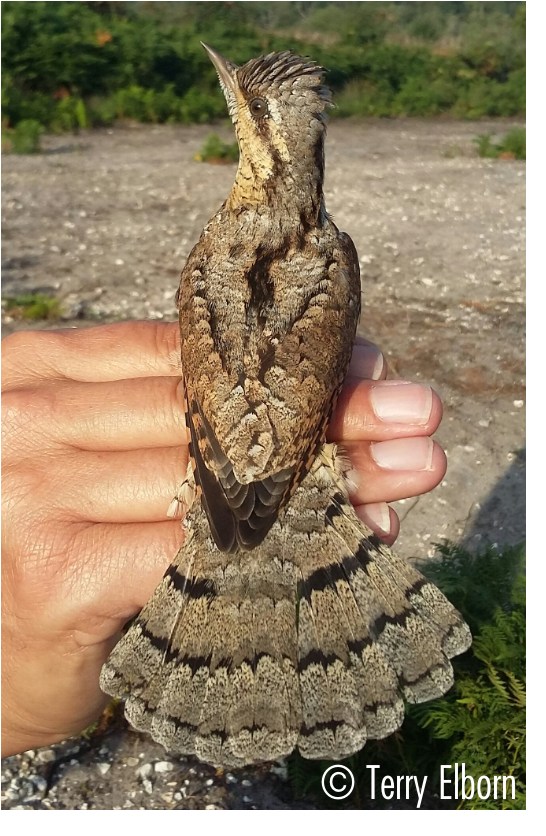
Yellow Wagtail
Latin Name
Motacilla flava
Status
Passage Migrant
Site And Records Information
Passes through in very small numbers during the spring with any field containing cattle being a target. In the autumn passage is much stronger with flocks roosting and feeding in areas like Lytchett Bay, Greenland’s Farm, Hartland Moor, Swineham, Wareham Water Meadows and Holton Lee, but it’s worth checking any field containing cattle as there is a good chance you’ll see them feeding in amongst the cows feet! Listen out for their loud ‘pist’ calls on August and September mornings as they move from roost to feeding sites. 400 at Keysworth on 29th August 1987 is largest flock on record. 3 figure flocks are now rare, 150 at Lytchett Bay on 7th Sep 2014 the most recent.
The earliest is 1 at Lytchett Bay in sub-zero temperatures on 1st Apr 2013. There is one winter record from Studland on 10th December 1977.
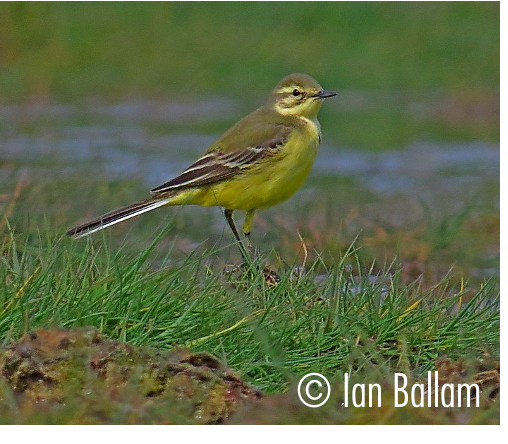
Yellow-browed Warbler
Latin Name
Phylloscopus inornatus
Status
Scarce Autumn Passage Migrant
Site And Records Information
Fifty years ago Yellow-browed Warbler were an extreme rarity to the UK, and needed a description written to the BBRC (British Birds Rarity Committee) for the report to be considered for acceptance. On 11th October 2018 an estimated 500 Yellow-browed Warbler were seen across the UK highlighting the drastic change in status of this delightful bird. In recent years Poole Harbour has seen its fair share of them too with 16 records in 2016 alone. Scanning through Long-tailed Tit flocks anywhere around the harbour could yield a Yellow-browed Warbler with several lucky birders in Poole even having them in their gardens! October and early November are the best times but there have also been a couple of over-wintering records too.
First record – 1 on 17th October 1971 Studland Heath
1 on 29th September 1985 at Little Sea
1 wintered at Border Drive, Lytchett Bay It was first discovered on 5th Dec 2003 staying until 24th Jan 2004
1 on 5th October 2008 at Middle Beach, Studland
1 on 16th October 2008 at South Haven, Studland 1 on 25th October 2008 at South Beach, Studland
1 on 19th October 2011 near Pilot’s Point, Studland
1 on 5th November 2011 at Studland
1 on 19th and 20th October 2012 at Poole Park
1 over wintered at Knoll Beach, Studland 2013 until April 4th 2014
1 on Brownsea Island 3rd Oct 2014
1 on 12th October 2014 at Glebelands, Studland
1 on 12th October 2014 at Swineham GP
1 on 27th October 2014 Lytchett Bay
3-4 individuals located along the Studland Peninsular in October 2014. South Haven, Ballard, Glebelands, Knoll beach, Middle Beach
1 at South Haven, Studland on October 2nd 2015
2016
October 2016 saw an unprecedented influx with numerous sightings and ringing records.
1 on 28th – 29th September 2016 at Coombe Heath, Arne (L.Philipps et al)
3 on 3rd October 2016 at the PCW Drain (P.Morton et al)
3 on 4th October 2016 at the PCW Drain with one newly ringed (P,Morton et al)
1 on 4th October 2016 in an Oakdale garden (I.Ballam)
2 on 6th October 2016 at PCW Drain, both newly ringed (I.Lewis et al)
3-5 on October 6th 2016 at RSPB Arne (numerous reports, but three together on the Shipstal Trail with reports from elsewhere on the reserve).
1 on 7th October 2016 at the PCW Drain newly ringed (I.Lewis et al)
1 on 8th October 2016 newly ringed at Lytchett Bay (B.Gifford et al)
1 on 8th October 2016 at RSPB Arne (Arne staff et al)
1 on 9th –10th October 2016 in Chads Copse, Lytchett Bay (I.Ballam et al)
1 on 10th October 2016 in the Arne car park (L.Phillips et al)
1 on 11th October 2016 at Lytchett Heath, newly ringed (S.Robson et al)
2017
1 on 5th Jan 2017 at Greenlands Farm, Studland (B.Edge)
1 on 8th Jan 2017 on Lytchett Heath (M.Constantine, M.Robb, N.Hopper, P.Morton)
1 on 10th Jan 2017 at East Holme (H.Murray)
1 on 26th & 27th Jan 2017 at Cabots Lane, Poole – (K.Lane et al)
1 on 20th Sept on private site at Arne (MJ Lawson)
1 on 24th-26th Sept in and around the Arne RSPB car park (Arne staff)
1 ringed on 17th Oct 2017 at Ballard Down (O.Slessor)
1 ringed on 26th Oct 2017 at Ballard Down (O.Slessor)
1 on 27th Oct in an Oakdale garden (MJ Lawson)
2018
1 ringed on 8th Oct 2018 at Ballard Down (O.Slessor)
1 ringed on 9th Oct 2018 at Ballard (O.Slessor)
1 in PCW Drain 15th Oct 2018 (I.Ballam)
1 on Ballard Down 16th October 2018 (P.Morton et al)
1 ringed on 5th Nov 2018 at Ballard Down (O.Slessor)
2019
1 at Lytchett Bay View from 4th-9th Dec.
1 at Broadstone on 13th Mar was the only spring record, and 1 also at Broadstone on 1st Nov.
2020
1 at Cold Harbour, Wareham Forest on 16th & 17th Oct.
1 at Lytchett Heath 11th Oct
1 at Upton CP 19th Oct
2021
1 in private garden Broadwater Avenue, Poole on 8th Feb and possibly the same bird on 12th Feb in Trigon Road, Poole.
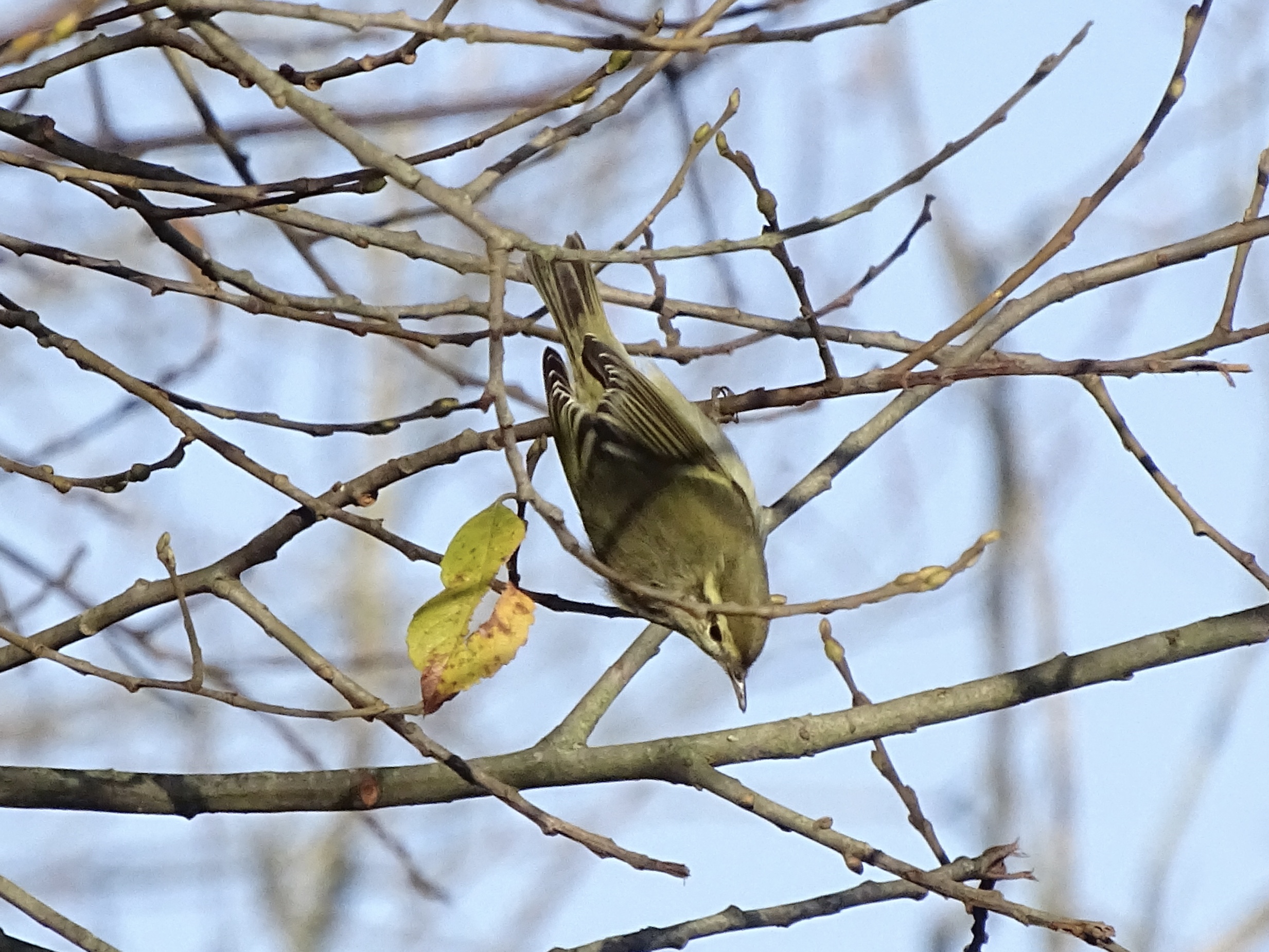
Yellow-legged Gull
Latin Name
Larus michahellis
Status
Resident
Site And Records Information
Poole Harbour is/was possibly the best site in the county and one of the best in the country to see this gull. Britain’s first attempt at breeding occurred on Brownsea from 1996-1999 where they only successfully raised two young in 1997 and again in 1999. Breeding then continued to 2017 when sadly one of the adults disappeared and breeding stopped. At the time it was considered to be the only pure breeding pair of Yellow-legged gull in the UK. Kerry Foods on the edge of Holes Bay is the best known site with up to ten birds present throughout the winter months and by May at least 40 birds, mainly sexually immature 1st and 2nd summers, are present. Numbers peak in late August and September when over 300 birds have been present (max 312 Sept 2001). This was a considerable increase on the previous harbour max of 210 on 12th August 1999. Up to 50 birds have also been recorded in Lytchett Bay with the timing of the maximum counts matching those at Kerry Foods.
At least 40 birds have been seen at Corfe Mullen Tip over the years presumably from nearby Holes Bay. Birds can be watched leaving the tip and heading towards Holes and Lytchett Bay. With the Wareham Channel in the distance this gives a good vista from which to study where most gulls are heading when the tip shuts at 5pm.
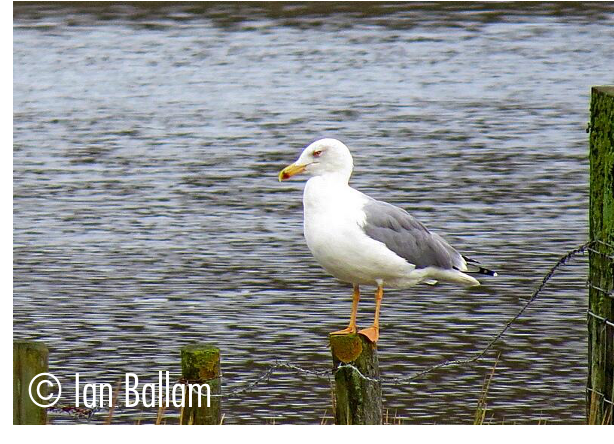
Yellowhammer
Latin Name
Emberiza cirlus
Status
Resident
Site And Records Information
There used to be 31 breeding pairs at Arne RSPB Reserve in 1980 and now there are none. Breeding is now confirmed at Challow Hill, Corfe, Ballard and Godlingston. They are also regular passage migrants in the autumn as local birds depart and others arrive. Winter flocks are also rare but they have occurred around the farms that boarder Hartland Moor such as Scotland Farm and also Greenlands.
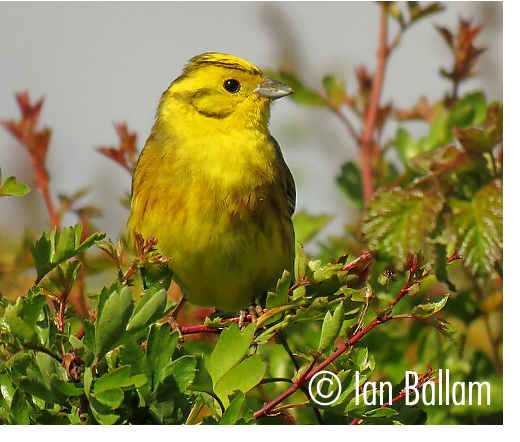
Call 01202 641 003
© 2024 Birds of Poole Harbour Registered Charity No. 1152615
